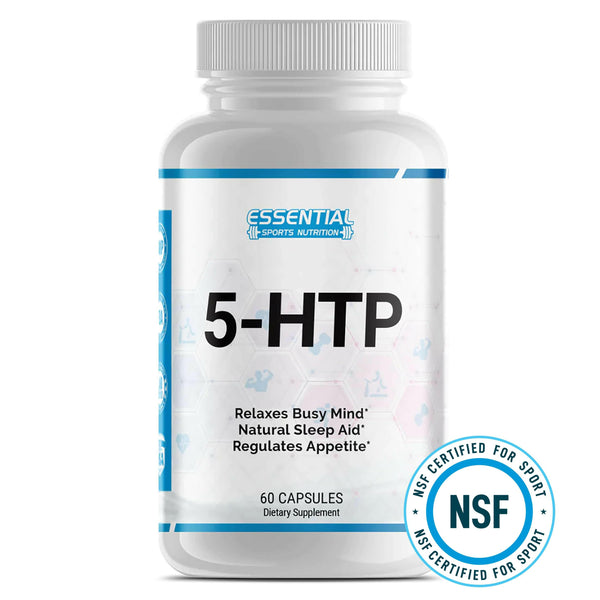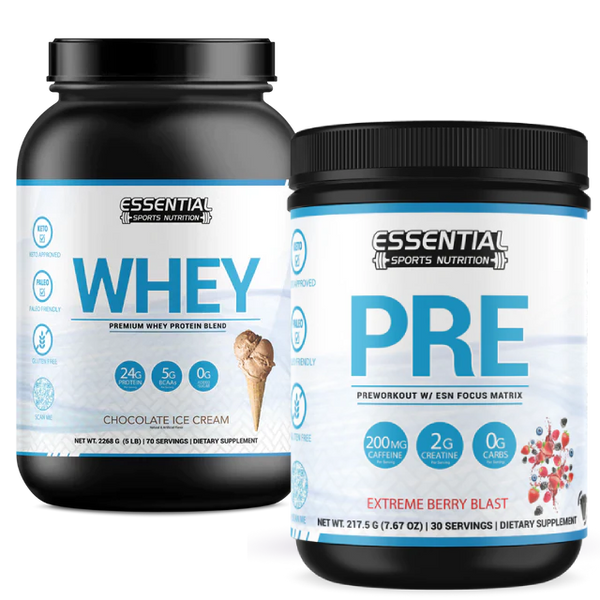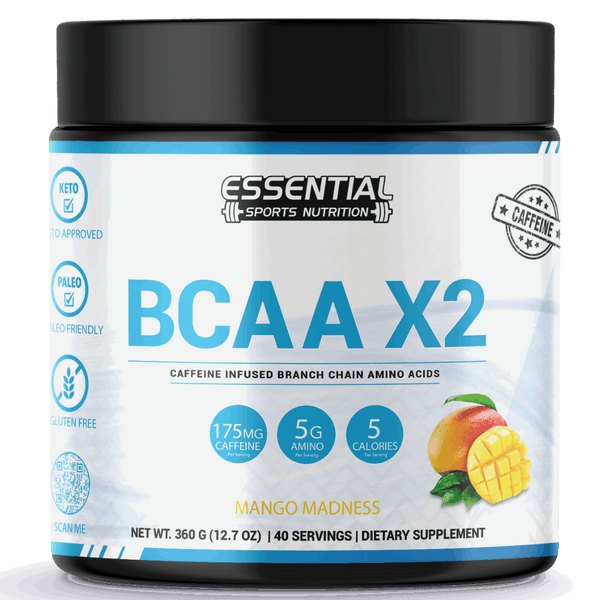Paleo Diet for Athletes: Optimize Performance and Endurance
As an athlete, your quest for peak performance is relentless. You strive to push boundaries, break records, and outperform yourself. Nutrition plays a pivotal role in this journey, and that's where the Paleo Diet for Athletes enters the frame, with an enduring promise to optimize athletic performance. This high-protein, nourishment-packed regimen draws inspiration from the endurance athletes diet of our ancestors, coupled with a contemporary understanding of performance nutrition.
Through a tailored fusion of natural foods, you'll discover how a high-protein diet not only fuels you but also aids in faster recovery. We're not just talking about any foods, but ones that have stood the test of evolutionary time. Indulge in sumptuous Paleo recipes for athletes that are as delicious as they are functional, offering you the perfect gastronomic ally in your athletic endeavors.
Key Takeaways
-
Discover how the Paleo Diet can be your secret weapon for outperforming the competition.
-
Understand the importance of natural, high-protein nutrition in elevating your physical condition.
-
Learn to use Paleo recipes tailored specifically for athletes to fuel and recover from intense workouts.
-
Explore the benefits of the Paleo Diet in not just performance, but also in overall health and well-being.
-
Adopt a diet that works in synergy with your body's natural physiology for maximum athletic gain.
Introduction to the Paleo Diet for Athletes
Transitioning to a lifestyle that supports your athletic ambitions involves rethinking your diet. The Paleo Diet for Athletes stands out as a nutritional strategy geared toward enhancing your performance. Catering specifically to Paleolithic bodies in a contemporary world, it symbolizes a return to the types of foods that our ancestors thrived on. The diet's natural and high-protein approach can be the cornerstone of a robust sports nutrition regimen.
History and Concept of Paleo Diet for Performance Enhancement
The Paleo diet, as customized for athletes by Dr. Loren Cordain and Joe Friel, brings an ancient nutritional framework into the context of modern athletic performance. It's predicated on the premise that our bodies are optimized to consume the wholesome, unprocessed foods that were available during the Paleolithic era. When you avoid foods labeled as nonoptimal, like processed grains and refined sugars, you gear your body to function seamlessly, as it historically did.
The Physiological Basis for Athletes Following a Paleolithic Diet
Your body is an intricate machine that requires the right fuel to operate at its peak. By focusing on optimal foods like fresh fruits, vegetables, nuts, and lean meats, the Paleo diet mirrors the high-energy needs of an athlete's regimen. However, the benefits don't just stop at energy. The Paleo diet benefits for athletes mark a considerable gain, such as improved recovery times, better muscle mass retention, and an overall reduction in inflammation.
The science behind the diet suggests that by eliminating agricultural era additions such as dairy and legumes, which are often implicated in inflammatory and digestive issues, you provide your body with the essential nutrients without the burden of modern-day, nonoptimal foods. This is not about eating less; it's about eating right for your athletic performance.
| Food Category | Optimal Paleo Foods | Nonoptimal Foods |
|---|---|---|
| Proteins | Grass-fed meats, fish | Processed meats |
| Carbohydrates | Starchy vegetables, fruits | Refined grains, sugars |
| Fats | Avocados, nuts, seeds | Trans fats, industrially processed oils |
As you train and compete, integrating Paleo principles can be transformative. It's not just about what you omit but also about what you embrace. Athletes report feeling lighter, stronger, and more in tune with their bodies—a testament to the synergy between a high-protein diet and the rigorous demands of sporting endeavors.
Understanding the Nutritional Needs of Endurance Athletes

As an endurance athlete, your commitment to endurance training demands a comprehensive understanding of how to fuel your body right. It's not just about eating healthy; it's about choosing the right mix of macronutrients to sustain high levels of performance. The Paleo Diet for Athletes offers a blueprint to balance your carbohydrate, fat, and protein intake in a way that aligns with the intensity and timing of your training cycles.
The foundation of any successful athlete meal plan lies in knowing how to adjust these macronutrients to match your workload. Keep your protein intake consistently high to aid muscle repair and recovery. Carbohydrates, though often maligned, are an endurance athlete's friend during high-volume training, providing the necessary fuel to handle prolonged workouts. But as your training intensity varies, so should your carb-loading strategy. Fats are more than just a reserve of energy; they're crucial for hormonal health and should not be neglected, even in a diet that prioritizes lean meats and vegetables.
Dive into the table below to get a snapshot of how you might structure your macronutrient intake throughout different phases of your athletic training:
| Training Phase | Protein | Carbohydrates | Fat |
|---|---|---|---|
| Base Training | High | Moderate | Higher |
| Build Phase | High | High | Moderate to Low |
| Peak/Race Phase | High | Highest | Low |
| Recovery/Off-season | High | Low to Moderate | Moderate to High |
Note: These allocations are illustrative and may vary depending on your individual needs and specific dietary requirements. Always consult with a nutrition expert to tailor a meal plan that's just right for you.
To truly harness the power of your diet, embrace the cycle of training and recovery. By adapting your dietary intake of macronutrients based on the demands of your endurance training, you establish a rhythm that sustains energy, maximizes performance, and accelerates recovery. Remember, every bite you take is a part of your training strategy. Nutrition is not just about calories; it’s about making those calories work for your performance.
Paleo Recipes for Optimal Athletic Performance

As an athlete, your diet is a vital component of your training regimen, and adopting Paleo recipes for athletes can take your performance to the next level. These recipes are designed to meet the specific needs of those following an athlete's diet, focusing on both pre-exercise energy boosts and post-exercise recovery.
Nourishing Breakfast Options for Energy
Start your day with a Paleo breakfast designed to fuel your energy output. A popular choice is a hearty serving of scrambled eggs paired with nutrient-rich vegetables like spinach and bell peppers.
-
Garnish with avocado for a dose of healthy fats
-
Include a modest serving of sweet potato hash to supply low-glycemic index carbs essential for lasting stamina
This savory meal ensures a balance of macronutrients that align with Paleo dietary principles while giving you the energy needed for high performance.
Post-Workout Paleo Recovery Smoothies
Recovery is just as critical as the workout itself. A Paleo recovery smoothie is perfect for facilitating muscle repair and replenishing your energy stores. A blend of coconut water, bananas, and a scoop of natural almond butter can supply you with high-glycemic index carbohydrates and proteins necessary for optimal recovery.
-
Add a touch of honey for sweetness and an additional energy kick
-
Throw in some kale or spinach for a boost of iron and antioxidants
Enjoying this smoothie post-workout can help jumpstart your body's recovery process, ensuring you're ready to tackle your next challenge.
Macronutrient Requirements for Athletes on Paleo

Embarking on the Paleo diet as an athlete means tuning into your body's macronutrient needs with precision. Your daily protein intake, fat consumption, and carbohydrate sources play pivotal roles in fueling your performance and recovery. Let's delve into how to adjust these critical macronutrients to your training demands and the rhythm of your athletic seasons.
How to Adjust Proteins, Fats, and Carbohydrates for Training
If you're following a Paleo diet, protein is your powerhouse, staying consistently high to repair and build lean muscle mass, reduce recovery time, and maintain optimal health. But what about fats and carbohydrates, the energy providers? They are the ones to tweak.
-
Protein: It’s not just about quantity; it's about quality. Opt for grass-fed meats, wild-caught fish, and free-range eggs to meet your protein requirements without compromising the Paleo principles.
-
Fat: In off-seasons or base training periods, increase your intake of healthy fats from sources like avocados, nuts, and coconut oil. This trains your body to utilize fat as a fuel source during long endurance activities.
-
Carbohydrate: As the intensity of your training ramps up, so should your carbohydrate intake. This isn't an invitation to processed foods but a nod towards denser Paleo-friendly sources like sweet potatoes and fruits.
Periodization of Diet: Syncing Nutrition With Training Cycles
Different training seasons demand different fueling strategies. This concept, known as diet periodization, aligns your nutritional intake with your current athletic focus. Here’s a snapshot:
| Season | Macronutrient Focus | Key Foods |
|---|---|---|
| Off-season/Base Training | High Fat, Moderate Protein, Low Carbohydrate | Nuts, Seeds, Avocado, Olive Oil |
| Build Phase | Increased Protein, Varied Fats, Moderate Carbohydrate | Egg Whites, Salmon, Almonds, Berries |
| Peak/Race Season | High Protein, Low Fat, High Carbohydrate | Chicken Breast, Sweet Potatoes, Bananas |
| Recovery/Transition | Moderate Protein, High Fat, Low Carbohydrate | Grass-fed Beef, Coconut, Apples |
Do note that this table serves as a general guideline. Your specific needs may vary based on your sport, body composition, health goals, and even the duration and intensity of your training sessions. Listen to your body, and don't hesitate to customize your macronutrient intake. Embrace the seasonality of your training and the Paleo diet to maximize your potential both on and off the field.
Modifying Paleo Principles for Sports Nutrition

Adopting the Paleo diet can unlock numerous benefits for athletes, particularly when carefully tweaked to meet the nuanced sports nutrition landscape. Endurance and strength athletes alike face unique demands that dictate a tailored approach to their meal planning—one that optimizes for performance nutrition without sacrificing the core tenets of Paleo eating.
A standard Paleo regimen emphasizes foods with a low to moderate glycemic load, but athletes may require additional carbs to fuel their rigorous training and promote recovery. By integrating moderate glycemic load sources, like sweet potatoes and bananas, immediately before and after exercise, athletes can achieve the perfect blend of immediate energy and sustained release to improve performance.
Furthermore, to address the high energy requirements of athletes, the Paleo diet can be adapted to include more calorie-dense nuts and seeds, along with lean proteins that expedite recovery and muscle repair. The inclusion of anti-inflammatory foods like salmon, rich in Omega-3 fatty acids, also plays a vital role in reducing recovery time and improving joint health.
-
Integrate natural, Paleo-friendly carb sources prior to intense training for energy boosting.
-
Consume a blend of carbs and proteins post-workout to speed up muscle recovery.
-
Increase intake of Omega-3 rich foods like salmon to combat inflammation.
Understanding the balance of macronutrients and timing the intake around training empowers athletes to leverage the Paleo diet benefits for athletes, ensuring their dietary framework is in sync with their body's fluctuating energy demands.
By incorporating these strategies into your daily routine, you not only honor your body's evolutionary history but also rise to meet the modern demands of athletic performance. The Paleo diet, when adapted for sports nutrition, is more than a diet—it's a performance enhancer that aligns with your commitment to excel in your sport.
Paleo Diet for Athletes: Its Impact on Body Composition and Health Indicators

As someone who's invested in optimizing your athletic performance, you may have contemplated how your diet influences factors like weight, BMI, and overall health indicators. The Paleo Diet, geared towards emulating the eating habits of our ancient ancestors, has shown promising results for athletes like you, impacting not only body composition but also long-term health markers. Let’s delve into the influence of this ancestral approach to nutrition on your athletic body and health.
Short-Term Versus Long-Term Effects of Paleo Diet in Athletes
Adapting to a Paleo lifestyle, you might observe initial changes in your weight and BMI, as the diet's emphasis on whole foods and lean proteins encourages a leaner physique. However, the true excellence of the Paleo Diet shines when you maintain consistency, with its long-term impact on health indicators like waist circumference becoming more apparent. Integrating this diet could be your stride towards not only lean muscle mass but also enduring metabolic health benefits.
Anthropometric and Metabolic Changes in Athletes on Paleo
Anthropometric changes, referring to the measurements and proportions of your body, alongside metabolic health parameters, are crucial for athletes like you. The Paleo Diet's potential to significantly revamp these measurements is too compelling to ignore. Here's a comparative overview highlighting the promising changes that this dietary shift can invoke:
| Health Indicator | Typical Diet | Paleo Diet |
|---|---|---|
| Weight | Varies, often higher | Typically lower |
| BMI (Body Mass Index) | May be elevated | Leaner, within optimal range |
| Waist Circumference | Can indicate abdominal fat | Often reduced, indicating lower fat deposition |
| Total Cholesterol | May be within higher ranges | Tends to decrease |
| LDL-C ("Bad" Cholesterol) | Higher levels | Reduction in levels |
| Fasting Plasma Glucose | Varies | Improved, stable levels |
Clearly, the Paleo Diet casts a substantial effect on your body composition along with your metabolic and health indicators. It can be a major contributor to reshaping your athletic form and fortifying your health for the long haul. So, if you're pondering whether the Paleo lifestyle aligns with your goals, both the steak and the statistics suggest it might be worth taking a leap back in time to go forward in your athletic endeavors.
Addressing Common Myths and Misconceptions

Embarking on the Paleo diet may seem daunting due to numerous myths and misconceptions that circulate in the diet universe. It's often mistakenly seen as just another control diet or classified inaccurately as a strictly low-carbohydrate diet. To separate fact from fiction, a systematic review and meta-analysis have been conducted that debunk these widespread dietary misconceptions.
One of the primary errors people make is to pigeonhole Paleo as primarily concerned with massive protein intake. The truth is, the diet emphasizes balance and nutritional density, encouraging a varied intake of whole foods. The following table dispels some of the common untruths and provides clarifications rooted in scientific evidence.
| Myth | Misconception | Reality |
|---|---|---|
| Paleo is strictly low-carb | Many believe the diet eliminates carbohydrates entirely. | While lower in carbs than some diets, Paleo includes nutrient-dense, high-fiber carb sources like fruits and vegetables. |
| Paleo is high-protein | The misconception is that Paleo is akin to a carnivore diet. | Protein is vital but so are other macronutrients; Paleo promotes a balanced approach with lean meats, seafood, nuts, and seeds. |
| Paleo lacks variety | Some argue Paleo is restrictive, limiting food choices. | The diversity in vegetables, fruits, nuts, and seeds ensures a varied and colorful plate. |
In conclusion, while you may stumble across various assumptions about the Paleo lifestyle, it's crucial to sift through the noise. Recognize that most misconceptions are oversimplifications, often omitting the diet's actual principles and flexibility. Whether you're looking at a Paleo diet as a potential lifestyle change or just to gain an understanding, delving into systematic reviews may offer the most nuanced insights, debunking popular myths and highlighting the distinctiveness of this dietary approach.
Real-Life Application: Athletes Successfully Adopting the Paleo Diet

In the world of competitive sports, dietary strategies are a critical aspect of success. With the increasing spotlight on healthful eating, many athletes are turning their attention to following the Paleo diet. This lifestyle change is prominent among athletes, highlighted by those engaged in CrossFit—a community known for its rigorous physical demand and emphasis on optimum nutrition.
Case Studies: Professional Athletes' Experiences With Paleo
Several professional athletes have volunteered their experiences with the Paleo diet, and the case studies are compelling. From increased endurance to better muscle recovery, the feedback from these professional athletes provides real-world evidence of the diet's effectiveness. The shift to consuming foods that are high in nutrients and low in processed additives has resonated across various sports disciplines, bridging the gap between Paleo principles and modern athletic demands.
Positive Outcomes and Testimonials From the Athletic Community
Not just professional athletes, but recreational athletes as well, have reported positive changes after transitioning to the Paleo diet. By refining their intake to those foods to which humans have historically been adapted, these athletes have chronicled significant improvements in their health markers and athletic performance. Below is a compilation of testimonials from athletes within the community:
"Adopting the Paleo lifestyle has been transformative, providing the fuel I need to tackle my CrossFit sessions and recover swiftly." - A notable CrossFit Champion
The consensus among those sharing their Paleo diet experiences is notable—the diet aligns with their goal of achieving peak physical fitness alongside general well-being.
| Athlete Category | Performance Impact | Recovery Experience | Overall Satisfaction |
|---|---|---|---|
| Professional CrossFit Athlete | Enhanced strength and stamina | Reduced muscle soreness | High satisfaction with diet |
| Marathon Runner | Improved endurance | Quicker post-race recovery | Strongly positive |
| Recreational Gym-goer | Increased energy levels | Faster muscle gain | Very satisfied; easier meal planning |
These athlete’s experiences testify to the Paleo diet's adaptability and effectiveness in various athletic settings, from the elite levels to the everyday fitness enthusiast. Accordingly, the Paleo diet continues to grow in popularity among athletes who aim to optimize their performance naturally, mirroring the diets of our ancestors.
Strategies for Adapting Paleo Diet While Maintaining Flexibility

Adopting a Paleo diet as an athlete doesn't mean you have to sacrifice the pleasures of dining out or the occasional treat. The cornerstone of a sustainable athlete's diet is the ability to blend nutritional rigor with the realities of an athlete's lifestyle. Understanding the 85:15 rule and selecting the right Paleo foods are crucial steps in achieving both diet adherence and dietary flexibility.
The 85:15 Rule: Balancing Diet Adherence and Lifestyle
Dietary flexibility is pivotal for long-term adherence, and the 85:15 rule is a testament to this notion. Under this guideline, you're encouraged to eat strictly Paleo 85% of the time, while the remaining 15% can be devoted to mindful indulgences. This principle acknowledges the importance of flexibility, allowing athletes to integrate their nutritional goals seamlessly with their social lives and personal preferences without derailing their athlete's diet.
Choosing the Right Paleo Foods for Athlete’s Diet
To maximize your performance and health, the selection of Paleo foods should be strategic, emphasizing quality and nutrient-density. The goal is to craft a personalized menu that caters to your specific needs as an athlete. Here's a table highlighting some key Paleo foods ideal for an athlete's diet:
| Food Category | Benefits | Examples |
|---|---|---|
| Protein | Supports muscle repair and growth | Grass-fed beef, wild-caught fish, free-range poultry |
| Carbohydrates | Provides energy for high-intensity workouts | Sweet potatoes, butternut squash, fruits |
| Fats | Sustains energy for longer workouts and aids in recovery | Avocados, nuts, seeds, olive oil |
| Vegetables | Delivers essential vitamins and minerals for overall health | Leafy greens, broccoli, bell peppers |
Remember, dietary compliance need not be an all-or-nothing approach. By integrating the 85:15 rule into your athlete's lifestyle, you grant yourself the liberty to enjoy life's culinary pleasures while still maintaining the integrity of your Paleo diet. With careful consideration of the foods outlined above, you can thrive on a diet that's both nutritious and flexible.
Conclusion

As we look towards the horizon, the future of the Paleo diet is glowing with potential, particularly among professional and recreational athletes. Merging traditional eating habits with cutting-edge nutritional science has rendered a blueprint for dietary success tailored for those demanding the most from their bodies. Whether you're chasing a personal best, or simply striving for a healthier lifestyle, the Paleo diet significantly magnifies one's ability to reach and surpass those goals.
The Future of Paleo Diet Among Professional and Recreational Athletes
Imagine a tapestry of competitors from varied sporting disciplines, all weaving the ethos of the Paleo lifestyle into their nutritional strategies. The ripple effect is already underway, with a noticeable uptick in athletes who boast about gains not only in their performance traction but also in metabolic health and body composition. This is a trend set not just to continue but to proliferate as success stories amplify and inspire both the elite and the weekend warriors.
Summarizing the Benefits and Practical Steps to Transition
Embarking on the Paleo journey involves a few key practical steps to ease the transition to Paleo. Firstly, embracing whole, nutrient-dense foods lays the foundation. Then, implement the 85:15 rule, allowing for moderate flexibility while upholding the principle tenets of the diet, thus ensuring long-term adherence and enjoyment. Lastly, customize your Paleo plan to dovetail with your unique training requirements and lifestyle preferences. After all, food should fuel your ambitions, not limit them. With these practices, the benefits of the Paleo diet can be fully actualized, catalyzing a renaissance of health and vitality within the athletic community.
Paleo Diet for Athletes FAQs
Q: What is the Paleo Diet?
A: The Paleo Diet, also known as the caveman diet, is a nutritional approach that focuses on consuming foods that our ancestors from the Paleolithic era would have eaten.
Q: How can the Paleo Diet benefit endurance athletes?
A: The Paleo Diet can benefit endurance athletes by providing a balanced intake of macronutrients such as protein, healthy fats, and carbohydrates, which can enhance energy levels and endurance performance.
Q: Are fats an important component of the Paleo Diet for athletes?
A: Yes, fats play a crucial role in the Paleo Diet for athletes as they provide a concentrated source of energy and help in the absorption of fat-soluble vitamins.
Q: Who is Loren Cordain and what role does he play in the Paleo Diet for athletes?
A: Loren Cordain is a renowned nutritionist and the creator of the Paleo Diet concept. His research and work have significantly influenced the adaptation of the Paleo Diet for athletes seeking optimal performance.
Q: Is carbohydrate intake restricted in the Paleo Diet for athletes?
A: While the Paleo Diet emphasizes whole, unprocessed foods, including fruits and vegetables, it does limit or exclude grains and legumes, which are traditional sources of carbohydrates.
Q: How can endurance athletes follow the Paleo Diet effectively?
A: Endurance athletes can follow the Paleo Diet effectively by planning their meals to ensure an adequate intake of nutrients, including lean proteins, healthy fats, and carbohydrates from non-grain sources.
Q: What are the overall benefits of the Paleo Diet for athletes?
A: The Paleo Diet for athletes can lead to improved digestion, increased energy levels, reduced inflammation, and better recovery, all of which contribute to enhanced athletic performance and overall well-being.




























